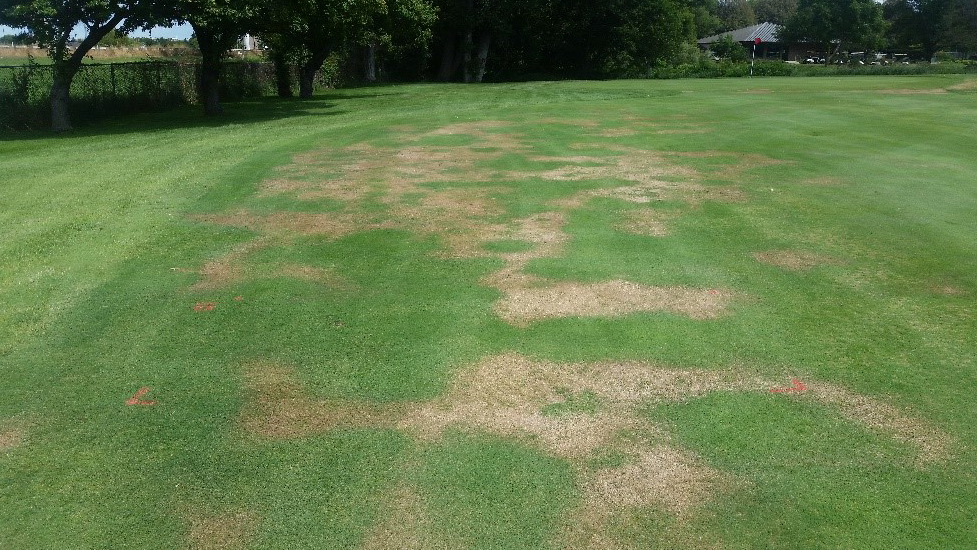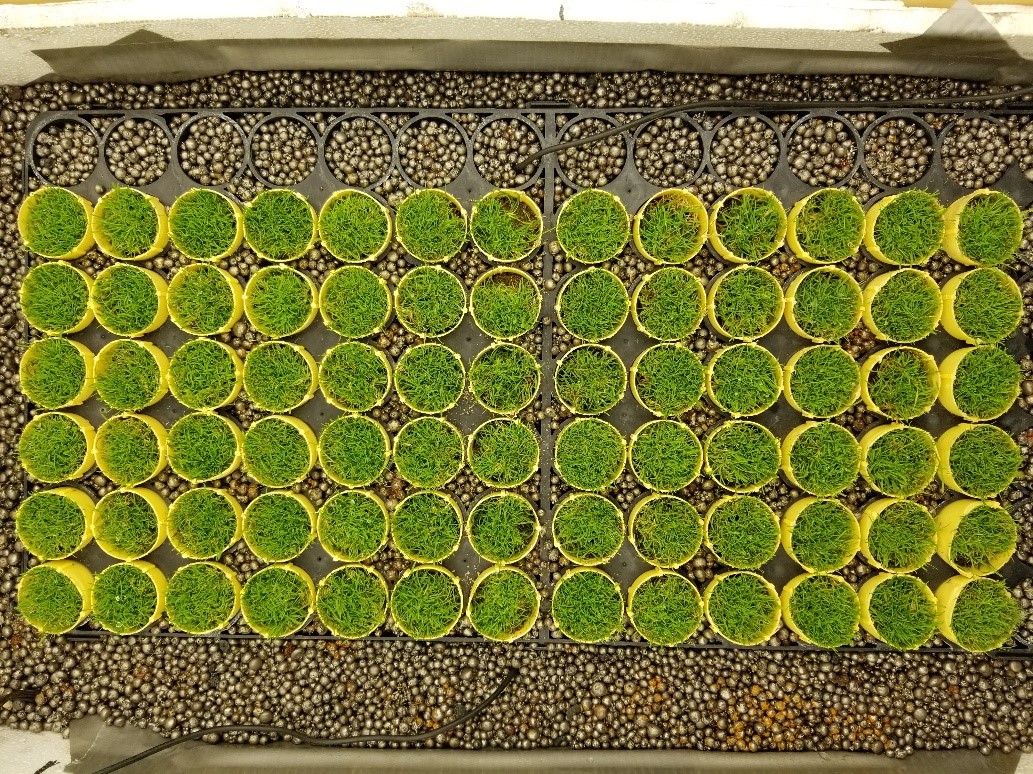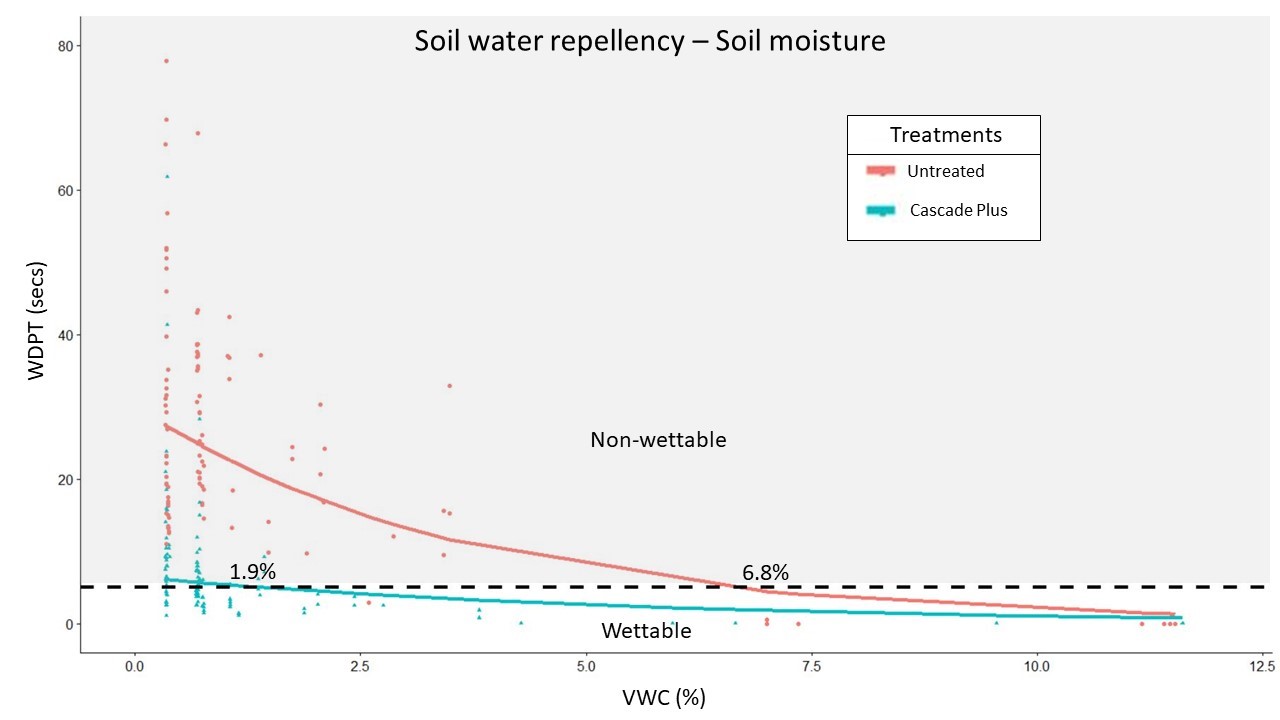By Ryan Schwab
Water-repellent soils are one of the challenges faced by golf course superintendents. This phenomenon can cause localized dry spots (Figure 1), which are areas of wilted turfgrass struggling from a rootzone with poor water infiltration, poor water retention, and non-uniform flow of water among other important soil characteristics. The potential or severity of soil water repellency may increase once the soil dries down to a specific level.
Critical soil moisture content (CMC) is the moisture level at which the soil switches from water-loving to water-repelling, which is different from the wilting point. The wilting point refers to water availability to the turfgrass, whereas the CMC refers to a change in soil behavior regarding soil-water interactions. I know the creeping bentgrass on our USGA specified research green will begin to show signs of wilt around 6-9% volumetric water content (VWC), but I do not know when the rootzone will become water-repellent. A way to determine the CMC is by measuring the hydrophobicity of the soil via water droplet penetration time (WDPT) over a soil moisture gradient.
Our team conducted research on soil water repellency as part of a MGCSA Member-Driven Research project involving the soil surfactant, Cascade Plus. Soil surfactants are products applied on turfgrass to prevent or remedy soil water repellency. The objective of this project is to determine reapplication frequencies based on the change in functional properties of a soil surfactant overtime. Small pots of creeping bentgrass harvested from our research green, were moved into a growth chamber and placed in porous heat baths filled with steel BBs (Figure 2). Each of the three heat baths was maintained at a different temperature (94, 82, & 71° F). This experimental setup enabled us to evaluate three different rootzone temperatures within the same environment to make conclusions about how soil temperature, water volume, and time influence functions of the soil surfactant involving soil water repellency parameters and water retention.
In the growth chamber study, as the sand rootzone dried, the pots treated with the soil surfactant were less hydrophobic than the untreated. We found that CMC was altered by the soil surfactant. For example, 30 days after soil surfactant application to creeping bentgrass maintained at 94° F rootzone temperature, the CMC was 1.9% VWC, whereas the untreated rootzone had a CMC of 6.8% (Figure 3). The soil surfactant reduced the moisture level at which the sand becomes water-repellent. Allowing greens to get down to this moisture level is not ideal, but if it happens, the soil surfactant we examined would be able to reduce the potential for localized dry spot caused by soil water repellency from that drying event.
We are currently doing the second run of this project and will have more results this fall. Stay tuned!


